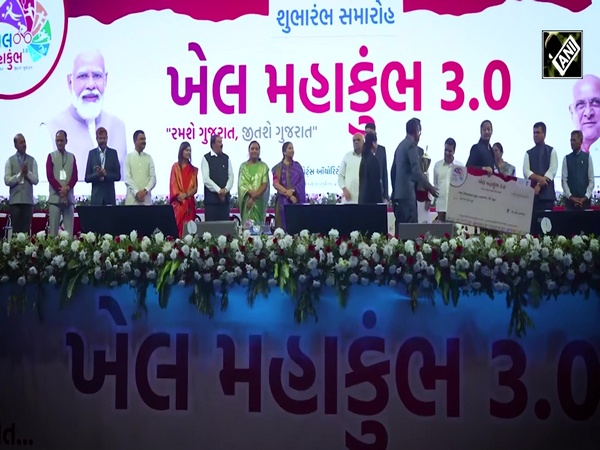Carbon credits, climate finance, impact of energy crisis...S&P Global Commodity Insights lists themes to watch during COP27
Nov 04, 2022

New Delhi [India], November 4 : The 27th session of Conference of the Parties of the UNFCCC or COP27 will be held at Sharm El-Sheikh in Egypt from November 6 to 18 in an effort to build on previous successes and pave the way for effectively tackling global climate change.
Dan Klein, head of future energy pathways, S&P Global Commodity Insights, said that against a backdrop of economic and geopolitical uncertainties, there are at least seven key things to watch for COP27 in Egypt.
"Clearly, the first and most pressing question for COP27 cent around what is actually possible in terms of unity and cohesion where chasms are opening due to recession and uneven wealth factors and geopolitics," Klein said.
Ahead of the widely followed annual global climate meet, S&P Global Commodity Insights has come out with at least seven key things to watch out for during the two-week-long summit.
They are:
Can the world unite around climate right now?
Western Europe and the US have significant plans to reduce carbon emissions but even if emissions in these areas decline to zero, emissions from the rest of the world would still need to fall 65 per cent to reach even a global 2-degree target. There is a real possibility that the current global energy crisis will result in some backtracking from existing climate commitments at COP27.
Will COP remain relevant?
Major policies and initiatives to address climate are increasingly focused on individual country goals rather than collective climate actions. Richer nations are looking to address their own strategic objectives as well as their citizens' concerns around economic uncertainty and rising inflation. The second week of COP, when time crunches typically intensify negotiations, may end up overshadowed by decisions at the concurrent G20 meeting.
Will COP27 provide clarity for voluntary carbon market participants?
Expect the focus to center on Article 6.2, and which mitigation activities qualify for internationally transferred mitigation outcomes (ITMOs), where emissions reductions achieved in one country can be passed to another country. S&P Global Commodity Insights analysts expect positive announcements will have the potential to support higher long-term carbon credit prices.
Will countries accelerate decarbonization goals?
It will be telling to see if and how countries alter their standing nationally determined contributions (NDCs) to the Paris agreement, and if energy security concerns affect decarbonization goals. The United States may be an outlier this year as the recently-passed Inflation Reduction Act adds real credibility to the US NDC.
What is the progress on additional agreements made last year?
Coal, methane, and deforestation were featured at COP26. Will this be the year that countries finally agree to phase out coal, even amid energy security concerns? More than 100 countries signed the Global Methane Pledge to reduce methane emissions by 30 per cent by 2030, and 100 countries committed to ending deforestation by 2030. Signatories of these agreements will be under scrutiny to show progress.
What will India do?
India will be looking for funding from the developed world to address carbon mitigation, pointing to the fact that per capita fossil fuel consumption in the US remains over 10 times the level in India.
Are richer nations willing to finance poorer nations' efforts on mitigation and adaptation?
International agreements for wealthy nations to fund decarbonization efforts in developing nations remain largely underfunded. Recent weather events, such as the flooding in India and Pakistan are being tied directly to climate change, which may increase the drive to create mechanisms of payments for losses and damages, although wealthy nations may resist this drive due to difficult macroeconomic conditions.
What did India announce at COP26 held in 2021?
At the COP26 summit in Glasgow in late 2021, Prime Minister Narendra Modi committed to an ambitious five-part "Panchamrit" pledge, including reaching 500 GW of non-fossil electricity capacity, to generate half of all energy requirements from renewables, to reduce emissions by 1 billion tons by 2030.
India also aims to reduce the emissions intensity of GDP by 45 per cent. Finally, India commits to net-zero emissions by 2070.
Walking the talk, India has gone ahead and banned the use of several single-use plastics starting July 2022.
The adverse impacts of littered single-use plastic items plastic on both terrestrial and aquatic ecosystems, including in marine environments are globally recognized. Addressing pollution due to single-use plastic items has become an important environmental challenge confronting all countries.
India is expected to raise matters such as climate finance for the developing world where per capita emissions are comparatively quite low against the developed world in order to address carbon mitigation.




















